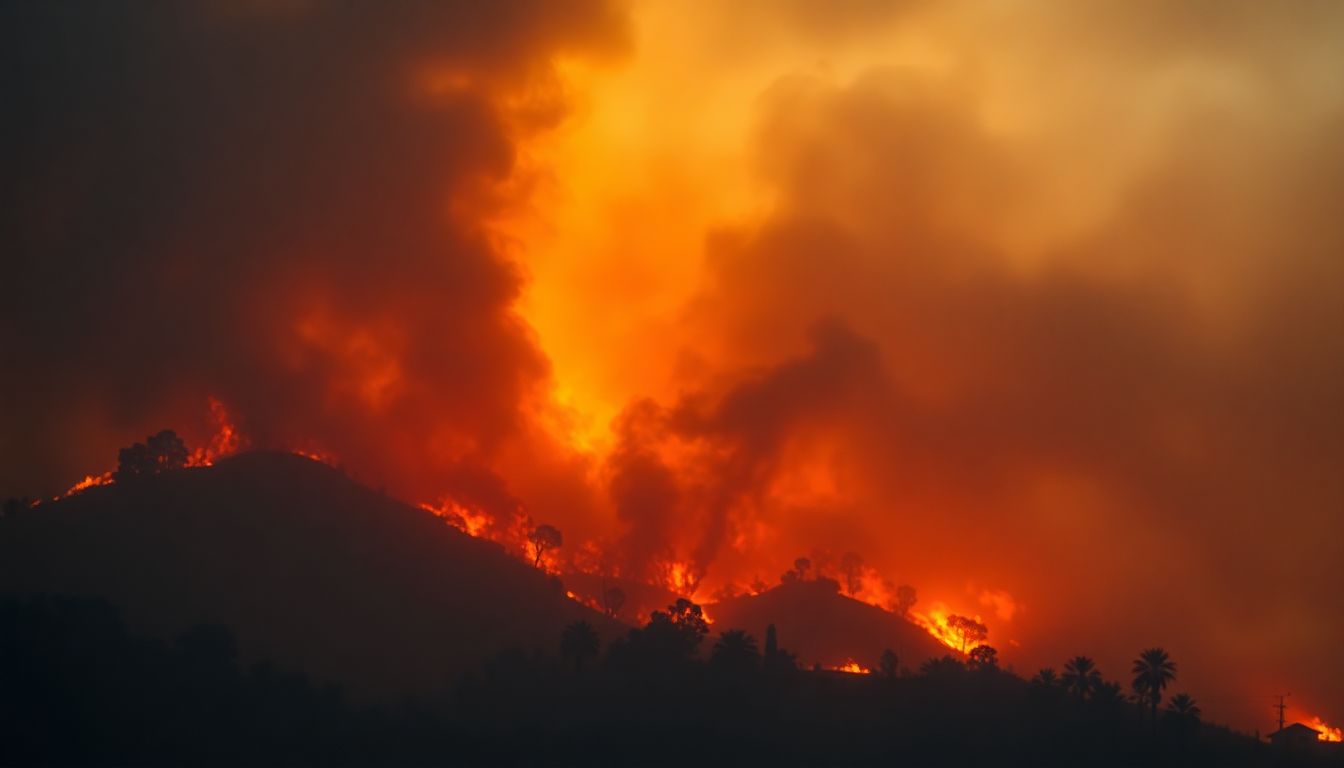
Hollywood Hills Wildfires: A Comprehensive Guide to Causes, Prevention, and Response
The Devastating Reality of Hollywood Hills Fires
Historical Context: Notable Wildfires in the Area
Hollywood Hills has a long history of wildfires. Major fires, like the 2018 Woolsey Fire, devastated homes and landscapes. Local hills, dry and steep, are prone to flames, especially in summer months. This area often faces threats from wildfires, reminding residents of nature's unpredictability.
The Human Toll: Property Damage and Loss of Life
Wildfires take a grave toll on life and property. Homes are often reduced to ashes, leaving families displaced. Lives can be lost, with firefighters and residents risking everything. The emotional impact leaves lasting scars on the community. Recovery from such losses is slow and requires significant support.
Economic Impact: Costs of Suppression and Recovery
The costs associated with wildfires in Hollywood Hills are staggering. Fire suppression efforts can run into millions. Recovery and rebuilding efforts add even more costs. Insurance claims often rise sharply after a fire, straining local economies. Investing in preventive measures can save money in the long run.
Understanding the Causes of Hollywood Hills Wildfires
The Role of Santa Ana Winds: Velocity and Impact
Santa Ana winds play a crucial role in spreading wildfires. These strong winds can reach speeds of over 60 mph. When dry air combines with these gusts, fires can change direction rapidly, making control nearly impossible. Understanding wind patterns is key to predicting fire behavior.
Human Factors: Negligence and Accidental Ignition Sources
Most wildfires stem from human actions, whether careless or accidental. Campfires left unattended, discarded cigarettes, and even sparks from machinery can ignite flames. Vigilance is vital. Each person's action matters in preventing wildfire disasters.
Climate Change: The Growing Threat of Drought and Extreme Weather
Climate change creates conditions ripe for wildfires. Rising temperatures and prolonged droughts contribute to dry vegetation. These factors make regions like Hollywood Hills more vulnerable to flames. As climate change continues to worsen, wildfire risks will only grow.
Fire Prevention Strategies: Protecting Homes and Lives
Creating Defensible Space: Landscaping and Vegetation Management
Homeowners can protect their properties by creating defensible spaces. This involves removing flammable plants and debris near homes. Keeping grass short and trees trimmed reduces fire chances. Effective landscaping can dramatically lower risks posed by wildfires.
Home Hardening Techniques: Structural Modifications for Fire Resistance
Making homes fire-resistant is essential in wildfire-prone areas. Using fire-resistant materials for roofs and siding can protect against flames. Installing ember-resistant vents can keep embers from entering homes. Simple changes can make a significant difference.
Community Preparedness: Early Warning Systems and Evacuation Plans
Community preparedness plays a vital role in fire safety. Early warning systems alert residents to potential threats. Having clear evacuation plans can save lives. Communities that work together and plan ahead can minimize damage and loss.
Effective Wildfire Response: Emergency Procedures and Aftermath
Emergency Response Teams: Coordination and Deployment of Resources
When wildfires spark, emergency response teams spring into action. Coordinating resources is crucial for effective firefighting. These teams use helicopters, fire engines, and skilled firefighters to tackle blazes. Their bravery helps protect lives and property.
Evacuation Procedures: Safety Measures and Community Support
Evacuation procedures ensure public safety during wildfires. Clear communication and organized routes help residents leave quickly. Community support is vital for those displaced, offering shelters and resources. Together, communities can recover and rebuild.
Post-Fire Recovery: Rebuilding and Community Resilience
After a wildfire, recovery begins. Rebuilding homes and lives takes time and effort. Communities band together, sharing resources for healing and restoration. Long-term support is necessary for true recovery and resilience against future fires.
The Impact of Wildfires on Hollywood's Landscape and Ecosystem
Long-Term Environmental Consequences: Soil Erosion and Habitat Loss
Wildfires alter landscapes dramatically. Soil erosion increases, leading to loss of fertile ground. Wildlife habitats may vanish, endangering many species. Understanding these consequences helps mitigate future risks.
The Role of Wildlife in Fire Recovery: Repopulation and Biodiversity
After fires, nature often rebounds. Wildlife plays a crucial role in recovery. Animals return to repopulate areas, encouraging biodiversity. This process helps ecosystems to heal and regain balance.
Impact on Water Quality and Air Pollution: Monitoring and Mitigation
Wildfires release pollutants, affecting air quality. Water sources can become contaminated with ash and debris. Monitoring these effects is vital for community health. Effective mitigation strategies can reduce these detrimental impacts.
Living with Wildfire Risk in Hollywood Hills: A Long-Term Perspective
Ongoing Research and Technological Advancements: Fire Prediction and Suppression
Research continues to advance fire prediction and suppression methods. New technologies, like drones and satellite imaging, enhance monitoring efforts. These tools help firefighters respond quickly and effectively. Embracing innovation is crucial for future fire safety.
Policy and Legislation: Addressing Wildfire Prevention and Management
Policies must adapt to growing wildfire risks. Stricter regulations on land use and fire safety can help protect communities. Legislators must prioritize wildfire management for long-term safety and sustainability.
Community Engagement and Education: Raising Awareness and Building Resilience
Community engagement is key in wildfire prevention. Education programs teach residents how to protect their homes. Workshops on fire safety create informed communities. Awareness leads to proactive measures, strengthening overall resilience.
Conclusion: Key Takeaways and Future Outlook
Hollywood Hills faces the ongoing threat of wildfires, necessitating a mix of understanding, preparation, and action. By acknowledging causes, implementing prevention strategies, and fostering community engagement, residents can effectively reduce risks. Embracing technology and policy changes will pave the way for a safer future. Together, we can create a resilient community that thrives despite fire risks.
https://newfactsonly.blogspot.com/
.png)
.png)
.png)
